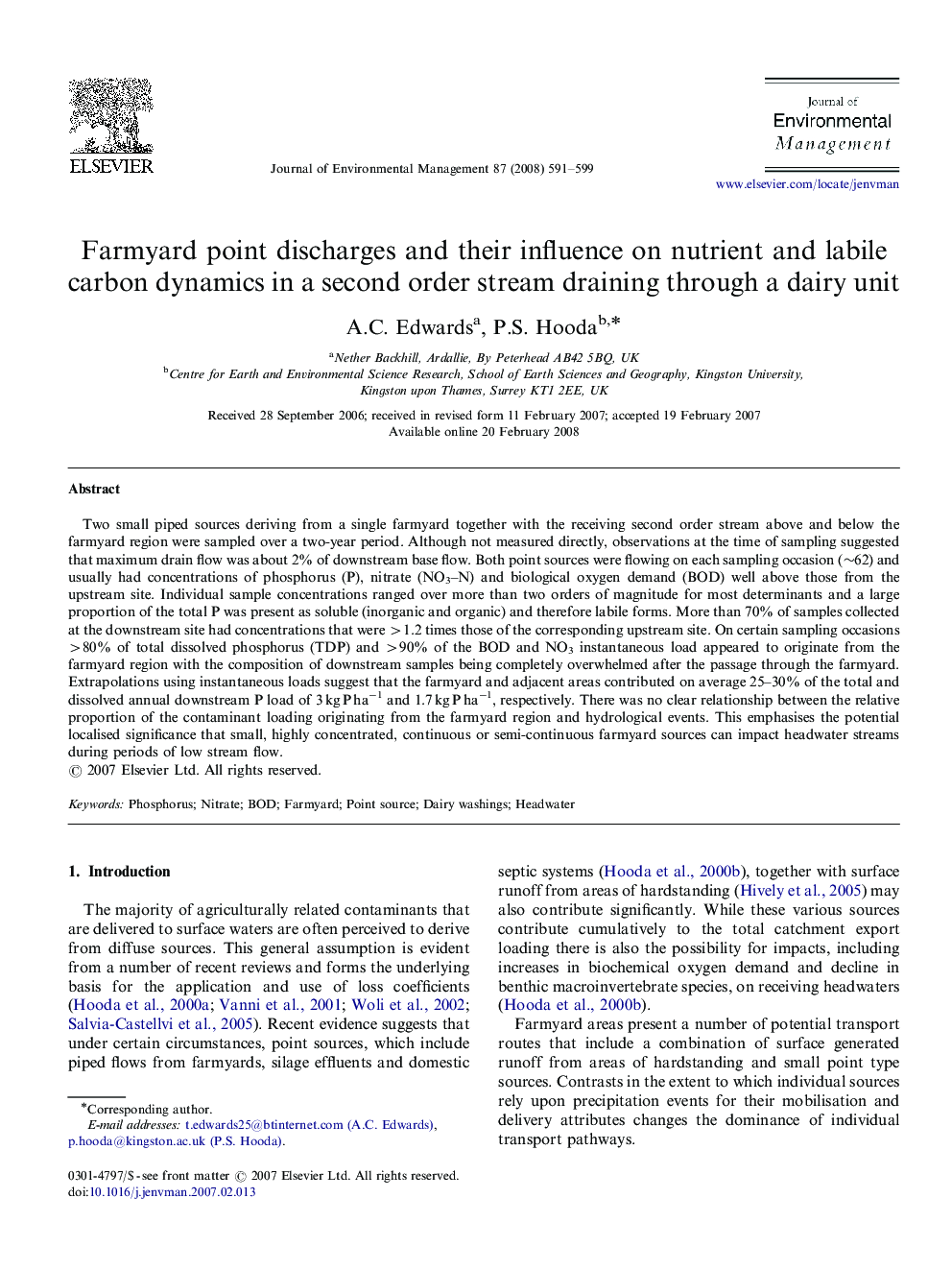| Article ID | Journal | Published Year | Pages | File Type |
|---|---|---|---|---|
| 1058610 | Journal of Environmental Management | 2008 | 9 Pages |
Two small piped sources deriving from a single farmyard together with the receiving second order stream above and below the farmyard region were sampled over a two-year period. Although not measured directly, observations at the time of sampling suggested that maximum drain flow was about 2% of downstream base flow. Both point sources were flowing on each sampling occasion (∼62) and usually had concentrations of phosphorus (P), nitrate (NO3–N) and biological oxygen demand (BOD) well above those from the upstream site. Individual sample concentrations ranged over more than two orders of magnitude for most determinants and a large proportion of the total P was present as soluble (inorganic and organic) and therefore labile forms. More than 70% of samples collected at the downstream site had concentrations that were >1.2 times those of the corresponding upstream site. On certain sampling occasions >80% of total dissolved phosphorus (TDP) and >90% of the BOD and NO3 instantaneous load appeared to originate from the farmyard region with the composition of downstream samples being completely overwhelmed after the passage through the farmyard. Extrapolations using instantaneous loads suggest that the farmyard and adjacent areas contributed on average 25–30% of the total and dissolved annual downstream P load of 3 kg P ha−1 and 1.7 kg P ha−1, respectively. There was no clear relationship between the relative proportion of the contaminant loading originating from the farmyard region and hydrological events. This emphasises the potential localised significance that small, highly concentrated, continuous or semi-continuous farmyard sources can impact headwater streams during periods of low stream flow.
